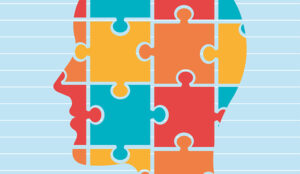Multi-skilling agents can help drive a more efficient contact centre operation, by allowing agents to switch between tasks and channels depending on incoming contact volumes.
We highlight the best ways to both manage and schedule multi-skilled agents for maximum impact.
Scheduling with spreadsheets is not easy
When scheduling multi-skilled agents in a contact centre, workforce planners need to take in to consideration the present workload, different channels available to the customer (phone, email, chat, etc.) as well as the specific skills of each agent.
Scheduling multi-skilled agents with manual rota creation through spreadsheets is feasible, but to effectively schedule for a multi-channel organisation, a workforce management solution becomes a prerequisite as it is capable of creating automated and optimised schedules that take into consideration multiple parameters such as agent skill levels as well as demand.
Allowing multi-skilled agents to switch between tasks and channels depending on the different incoming contact volumes will not only improve the service offered to customers but it will also decrease agent idle time as they are able to perform more than one activity. However, when scheduling agents, it is important to remember that they may have different degrees of proficiency in each channel. Workforce management technology can factor this in automatically.
For instance, if two agents have a proficiency of 50% in dealing with email customer service, WFM will take this into consideration when scheduling agents and count this resource as 1 instead of 2. The technology will also allow you to pre-load proficiency score levels, for example: a newly trained agent in email customer service will have a proficiency score of 50%. After 1 month the score will increase to 75%, to 85% after 2 months and finally reach 100% after 3.
For more on the fundamentals of scheduling and the key other areas of WFM, read our article: Workforce Planning: 20 Fundamental Rules
Annual leave gets more complicated

David Evans
Having multi-skilled agents can also make annual-leave management complex and time consuming as serious consideration needs to be given as to what skills are losing resource before a request can be accepted/denied. Workforce management technology has the ability to create budget groups whereby each group is given an absenteeism allowance in order to ensure there is never an excessive amount of annual leave given to people with the same skill sets.
With thanks to David Evans at Business Systems
Analytics can help identify skill gaps
Analysing and scoring 100% of omnichannel interactions not only helps to identify which skills are needed the most but also which agents possess these skills, and whether they are in fact multi-skilled. Every agent has their own performance scorecard which is updated daily. This makes it possible to identify agent strengths. Armed with this information, supervisors can manage and schedule their agents more effectively. They can also identify with greater certainty which agents have the skills to handle various channels of communications – and then schedule them accordingly.
For example, a supervisor having access to the full analytics data – including call acoustics – could find out that although an agent has the right skills to resolve a specific problem via email or chat, he/she may not do so well with the same problem over the phone.
This information becomes invaluable in deciding what type of skills are needed the most and when they are most needed. e.g. closing sales, problem resolution, empathy, being contextually aware and able to adapt dynamically on the call, ability to recognise churn or dissatisfaction language and rescue the call, being able to switch to a different channel depending on the interaction volumes.
Scorecards can help with skill improvement
Giving your supervisors and agents access to automated, daily scorecards for every agent enables the delivery of fast and efficient performance feedback and gives supervisors the opportunity to coach their agents to become multi-skilled. Perhaps more importantly, access to personal performance data helps to create a culture of self-evaluation and improvement as agents recognise where on the optimum customer path they could be improving their performance.

Maureen Szlemp
Supervisors or call centre managers can then motivate the desire to become multi-skilled by using gamification or incentivising up-skilling, based on the interaction analytics data. Supervisors can use the insight from analysing all of their agents’ interactions with customers in a number of ways to develop multi-skilled agents. For example, they can create targeted training programmes to ensure agents receive additional coaching to support their personal improvement objectives.
With thanks to Maureen Szlemp, Director of Marketing at CallMiner
The workforce management challenge
Creating optimal multi-skill staffing plans that effectively model your multi-skill routing can be challenging.
In a forecasting scenario, many workforce management solutions simply simulate the routing of different types of inbound interactions to a specific team or individual agent. While this approach helps to meet the anticipated service level, it falls short in providing the necessary staffing information to determine both current-day and near-future planning, as well as long-term strategy.
Modelling based on individual agent skill sets will not yield value because of the churn many contact centres experience. Will that agent even be there in three months’ time? Even if they are still around, their skill sets may have changed. The key is to model types of agents and contacts to better understand the types of agents that are required to meet the future workload.

Sarah Quennell
To model the workforce as it changes over time, it’s important to incorporate an abstraction between actual and types of agents. Maintaining this abstraction enables you to make quick intraday staffing decisions, such as “what particular skill or combination of skills should I plan to hire next month in order to meet my overall service level objectives across all of my types of contacts?”
It is important that the technology employs a multi-skill architecture that not only generates optimal forecasts and schedules but also identifies staffing requirements and optimal skill combinations based on your agents’ skill sets and available skills-based routing tools.
With thanks to Sarah Quennell, Director of Marketing at Aspect Software
Make use of skills in the back office
Any customer-facing organisation needs to manage interactions through multiple channels – from inbound and outbound voice to social media and the latest smartphone apps. The skills required to handle each are quite different. So, it’s critical you understand the skills profile of the agents you have available.
To solve a specific enquiry, you also need to know where these skills lie within the organisation. Resolving a social media issue, for example, may be better handled by marketing rather than the contact centre, while dealing with a credit card fraud dispute will typically sit within the middle or back office. It’s therefore crucial to have an active and comprehensive directory of all the people within your business that can support the customer effort, because only then can you decide which person to use for which interaction.
Put a quality management approach in place
All organisations need to be focused on delivering optimum service levels and ensuring the staff they have available can offer this. Training is not sufficient in itself. It’s also critical to have a quality management approach in place that can deliver features like real-time speech analytics, reporting and feedback mechanisms to ensure that the people you have working in specific interaction channels measure up to the standard that your customers and you as a business expect.
Skills needed will change across the day
In today’s multichannel age, there are typically four dimensions to evaluate. First, the resource you have available to solve the problem, both within your business, whether office-based or working from home, and external to it, including partners and suppliers. The second dimension consists of the channels that customers use to interact; the third, what problem customers are trying to solve, and the fourth, ‘time of day’.

Jeremy Payne
The latest workforce management technology allows you to pull all of this information together and will tell you, for example, that between 10 and 11am on a Monday, your business typically has a spike in social media interactions coming in that need to be managed, therefore you need x amount of skilled resource available across the business to engage with these customers and solve their problems. Such an approach also helps you identify your skills gaps and look at bringing in training programmes specifically to address and resolve them.
With thanks to Jeremy Payne at Enghouse Interactive
Use a single skills database
In a world where demand for support and issue resolution is at an all-time high, it’s important for contact centres to ensure staff are deployed in an environment where individual skills and knowledge areas can be categorised and logged.
One way of achieving this is through a single skills database that can directly engage with a contact centre’s routing interface, whether that be IVR, social media, or webchat.
Integrate training with KPIs
It’s important to integrate internal training initiatives with critical KPIs. Smart training solutions can continuously assess agent skills and knowledge, whilst delivering regular analyses and strategies for further development where required, enabling managers and trainers to address key skill gaps and areas for improvement in their staff – and efficiency can be further maximised through the bridging of agent availability against opportunities for further training and development. By integrating staff knowledge in a centralised location, this data can be integrated with modern workforce management systems seamlessly, in order to ensure efficiency isn’t compromised.

Lucille Needham
In order to ensure effective case routing and allocation, it’s imperative for contact centre managers to hold accurate availability and skill data for their agents. Modern forecasting solutions within the contact centre can automatically update historical data and employee skill information, log average customer journey and interaction times, and perform analyses, ensuring that agent availability and skill sets can be directed to the needs of the customer.
With thanks to Lucille Needham at Genesys
Monitor the skills queue
Modern contact centres allow supervisors to see the total number of requests queued at any point in each channel and therefore they can make adjustments as necessary. Multi-skilled agents are therefore kept utilised for maximum impact, giving supervisors a clear line of sight at all times.
A central dashboard is essential for setting up business rules for managing multi-skilled agents. Only cloud-based solutions with advanced routing ensure all enquiries, including those from social media, are directed to the right agents.
Using an outbound dialler for multi-skilled agents

Thomas Rødseth
Finding the rare breed of agent who is skilled at both outbound and inbound calls is a gift. Using an outbound dialler which can combine inbound and outbound calls in a seamless fashion means greater efficiency from this rare breed. Calls from an outbound list can be given a lower priority compared to regular incoming calls. This increases impact as outgoing calls are activated and flagged up automatically to the waiting talented and multi-skilled agent. The agent can then categorise each call answered and if necessary reschedule it for a callback at a more suitable time. This is a perfect example of how to manage call blending for multi-skilled agents.
With thanks to Thomas Rødseth, VP of Product and Marketing at Puzzel
Multi-skilling works differently in different WFM systems
The ability to predict staffing efficiency and occupancy against the projected workload for a given call type is a necessary component to calculate agent requirements in any environment.
Skills-based routing (SBR) has the potential to dramatically increase your centre’s contact handling efficiency in a multi-skilled agent environment. With SBR, inbound calls are routed directly to agents based upon their availability and individual skill assignments
To fully realise the potential of SBR technology, you must have a multi-skill-enabled workforce management (WFM) system capable of accurately forecasting agent requirements in this environment. While every major WFM solution provider touts multi-skill, no two tackle it in the same way. One successful approach is to embed multi-skill simulation into the WFM solution. This approach begins with Erlang-based calculations to establish an initial set of schedules.

Lauren Maschio
Simulation is then used to model call delivery, considering each agent’s schedule, skill profile and the specific routing logic in place at the contact centre. There is an iteration process that is automated in an embedded solution. This means that after each iteration, multi-skill efficiencies are measured and incorporated into requirements, and schedules are run again until no further efficiencies can be gained.
With thanks to Lauren Maschio at NICE
Don’t create too many skill groups
Maintain a balanced approach to skill and queue management. There can be a tendency to create too many unique skill groups or common sets of skills across the agent population. This leads to smaller group sizes, which undermines the efficiency delivered by larger groups. This can create unintended challenges for the centre when forecasting demand and headcount into smaller groups, not the least of which is the administrative burden placed on the centre analysts. A 250-agent centre with 50 unique skill sets probably represents an opportunity for consolidation.

Roger Lee and Daryl Gonos
Multi-skilling your agents or cross-training them across queues and skills does drive a more efficient contact centre operation by creating larger group sizes. These larger group sizes are able to process transactions much more efficiently than smaller groups while enabling higher levels of agent utilisation.
With thanks to Roger Lee and Daryl Gonos at OpenText WFO Software
For more on the topic of scheduling in the contact centre, read our articles:
- 10 Ways to Make Scheduling Processes More Efficient
- Workforce Optimisation: 11 Ways to Improve Your Contact Centre Schedules
- How do I Calculate… Schedule Adherence
Author: Rachael Trickey
Published On: 12th Oct 2016 - Last modified: 12th Aug 2025
Read more about - Technology, Alvaria, Business Systems, Call Routing, CallMiner, Editor's Picks, Enghouse Interactive, Erlang Calculations, Genesys, Jeremy Payne, Lauren Maschio, NiCE, Occupancy, OpenText, Puzzel, Scheduling, Workforce Management (WFM)



















Nice read,I keep the tab on my computer always as I talk to my clients, you build me every day. Thanks